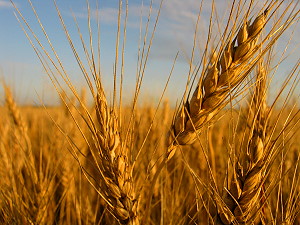 Northwest Region Crop Report Prepared by: Manitoba Agriculture
Northwest Region Crop Report Prepared by: Manitoba Agriculture
August 13, 2019 |
Northwest Region
Minimal rainfall reported through the Northwest region as crops progressed towards maturity this week, except San Clara and The Pas, where 8 mm was received. Average daytime temperatures were in mid-20’s while overnight temperatures dipped below 10°C. Many areas in the region still require rain, although too late to benefit most crops; soil moisture reserves would be improved. High temperatures from the previous week have produced some sunscald and aborted pods in canola. In general, yields so far are expected to be below average to average – depending on if the area had received enough moisture through the growing season. The Pas being the exception, receiving moisture throughout the season.
Desiccation of field peas continued last week and harvest of peas resumed throughout the week in Swan Valley and Roblin areas. Fababeans continue to mature. Winter wheat has been harvested in the Ste. Rose and Dauphin regions, with below average yields reported thus far; and is ready for harvest in Roblin area. Some preharvest glyphosate applications have occurred on spring wheat throughout the entire region as the crop reaches the appropriate stage and a start to swathing/straight cutting has begun in the Ste. Rose/Dauphin region; the remainder of spring wheat continues to mature. Flax in the Roblin area has completed flowering. Canola in the region has completed flowering for the most part, and is podded, with the exception of later seeded crops or those that did not germinate until they received moisture. Soybeans in the region range from R3 to R5 in the Swan Valley and Ste. Rose area; R5 in Roblin/Dauphin area and generally, pods are slow to fill due to lack of moisture. Silage corn is cobbed out and maturing. Warmer temperatures and moisture is needed for corn and soybeans. In anticipation of feed shortage, some crops originally intended to be harvested as grain are being taken off as greenfeed.
Bertha Armyworm monitoring is complete – there were four traps in the Northwest region which reached “uncertain” levels. They include Durban (394), Minitonas (418), Bowsman (South)(378) and Ste. Rose (403). These numbers are in the “uncertain risk” range (300 to 900) and reflect areas to prioritize when scouting for larvae. There are reports of grasshoppers moving to soybeans in the Ste. Rose area as cereal crops have been harvested – at this point between the lack of moisture and the grasshopper feeding some soybeans in this area will not recover. Thistle caterpillars have returned in soybeans, as well as Canada Thistle plants. It is important to assess damage before making a decision to control.
Extremely dry conditions are stressing both pastures and hay fields and no re-growth has occurred this week. Grasshoppers have moved to pastures that did have any regrowth and are now moving into annual crops. Many dugouts are very low; with some completely dry and creeks have stopped flowing. Annual silage crops are looking fair to good but desperately need rain. Finding feed for winter supply is very challenging for many producers in the area. Producers are making roadside hay to try to reduce the shortfall. Hay crop yields are 20% of normal to non-existent in the Ste. Rose, Rorketon, Alonsa and Ethelbert areas. Haying is complete in most areas and the Roblin and Swan River areas are reporting some second cut where first cut was taken early.
Greenfeed and cereal silage harvest continues in these areas as well with early reports of average yield. Pasture conditions are dropping with no rainfall this past week and range from poor to fair condition and dugouts are 50 to 75% of normal in the Roblin and Swan River areas.
